Complete Solutions to Exercises of chapter ELECTRIC CURRENT IN CONDUCTORS of Class 12 book with complete answers and questions
| Class 12 | PHYSICS |
| Chapter | ELECTRIC CURRENT IN CONDUCTORS |
| HC VERMA | Exercises |
| Number Of Questions | 84 |
| Academic Year | 2023-24 |
The amount of charge passed in time t through a cross-section of a wire is
`Q(t)=At^(2)+Bt+C.`
(a)Write the dimensional formulae for A,B and C.
(b) If the numerical values of A,B,and C are 5,3 and 1 respectively in SI units,find the value of the current at t=5 s.
View SolutionAn electric gun emits `2.0xx10^(16)` electrons per second. What electric current does this correspond to ?
View SolutionThe electric current existing in a discharge tube is `2.0(mu)A.`How much charge is tarnsferred across a cross-section of the tube in 5 minutes ?
View SolutionThe current through a wire depends on time as
`I = i_(0) + alphat`,
where `i_(0)=10 A and alpha=4 As^(-1)`.Find the charge crossed through a section of the wire in 10 second
View SolutionA current of 1.0 A exists in a copper wore of cross-section `1.0mm^(2)`. Assuming one free electron per atom calculate the drift speed of the free electrons in the wire. The density of copper is `9000kg m^(-3)`.
View SolutionA wire of length 1 m and radius 0.1mm has a resistance of `100(Omega)`.Find the resistivity of the material .
View SolutionA uniform wire resistance `100(Omega)`is melted and recast in a wire of length double that of the original . What would be the resistance of the wire?
View SolutionConsider a wire of length 4m and cross-sectional areal `1 mm^(2)` carrying of 2A. If each cubic metre of the material contains `10^(29)`free electrons, find the average time taken by an electron to cross the length of the wire.
View SolutionWhat length of a copper wire of cross-sectional area `0.01 mm^2` will be needed to prepare a resistance of `1 kOmega`? Resistivity of copper `= 1.7 xx 10^(-8) Omega m`.
View SolutionShown a conductor of length `l` having a circular cross section. The radius of cross section varies linearly form `a to b`. The resistivity of the material is`(rho)`.Assuming that `b-altltl`,find the resistance of the conductor.
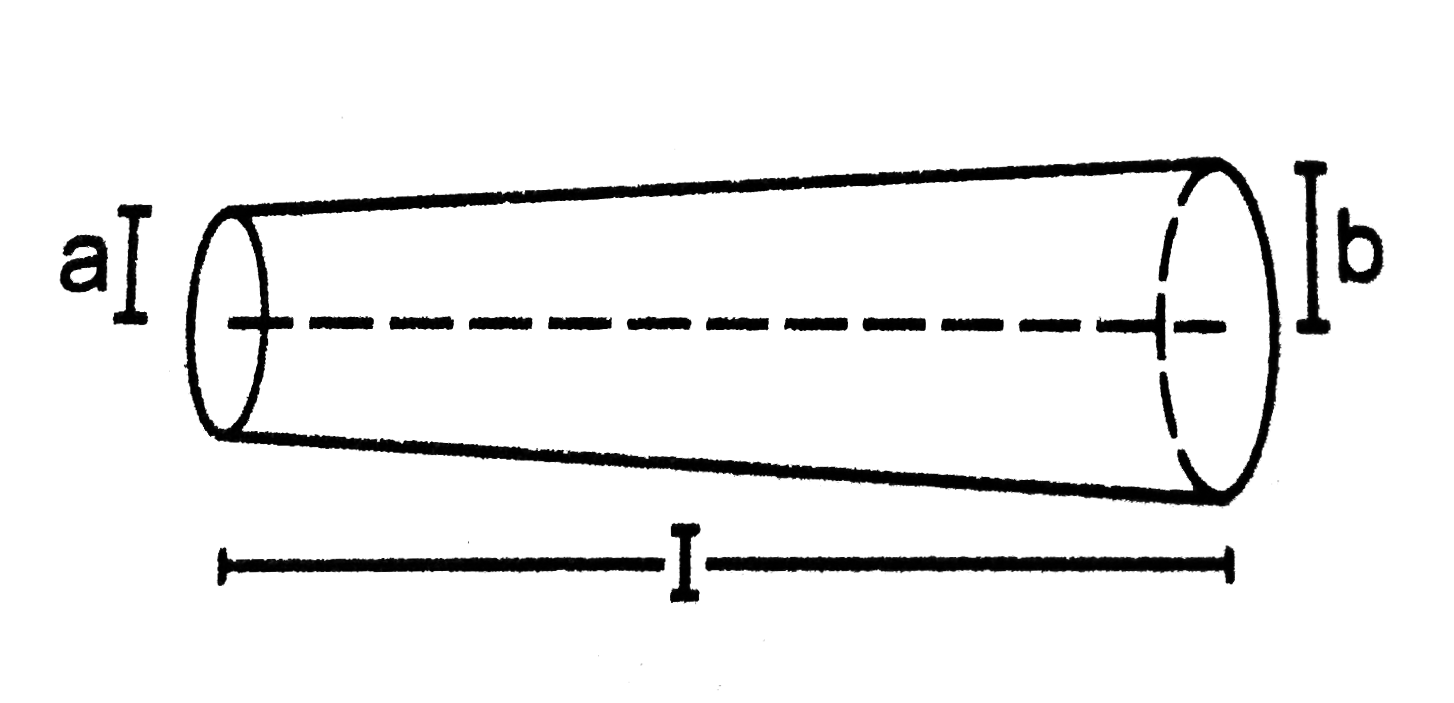
View SolutionA copper wire of radius 0.1mm and resistance `1k(Omega)`is connected across a power supply of 20 V.(a)How many electrons are transferred per second between the supply and the wire at one end?(b) Write down the current density in the wire.
View SolutionCalculate the electric field in a copper wire of cross-sectional area`2.0mm^(2)` carrying a current of 1A .The resistivity of copper `=1.7xx10^(-8)(Omega)m`.
View SolutionA wire has a length of 2.0m and a resistance of `5.0(Omega)`.Find the electric field existing inside the wire if it carries a current of 10A.
View SolutionThe resistances of an iron wire and a copper wire at `20^(@)C`are `3.9(Omega)`and `4.1(Omega)`respectively. At what temperature will the resistances be equal?Temperature coefficient of resistivity for iron is `5.0xx10^(-3)K^(-1)`and for copper it is `4.0xx10^(-3)k^(-1).`Neglect any thermal expansion.
View SolutionThe current in a conductor and the potential difference across its ends are measured by an ammeter and a voltmeter.The meters draw negligible current.The ammeter is accurate but the vlotmeter has a zero error(that is ,it does not read zero when no potential difference is applied).Calculate the zero error if the readings for two different conditions are 1.75A, 14.4Vand 2.75a, 22.4V.
View SolutionShown an arrangement to measure the emf `(epsilon)`and internal resistance r of a battery. The voltmeter has a very high resistance and the ammeter also has some resistance.The voltmeter reads 1.52 V when the switch S is open.When the switch is closed the voltmeter reading drops to 1.45 V and the ammeter read 1.0A Find the emf and the internal resistance of the battery.
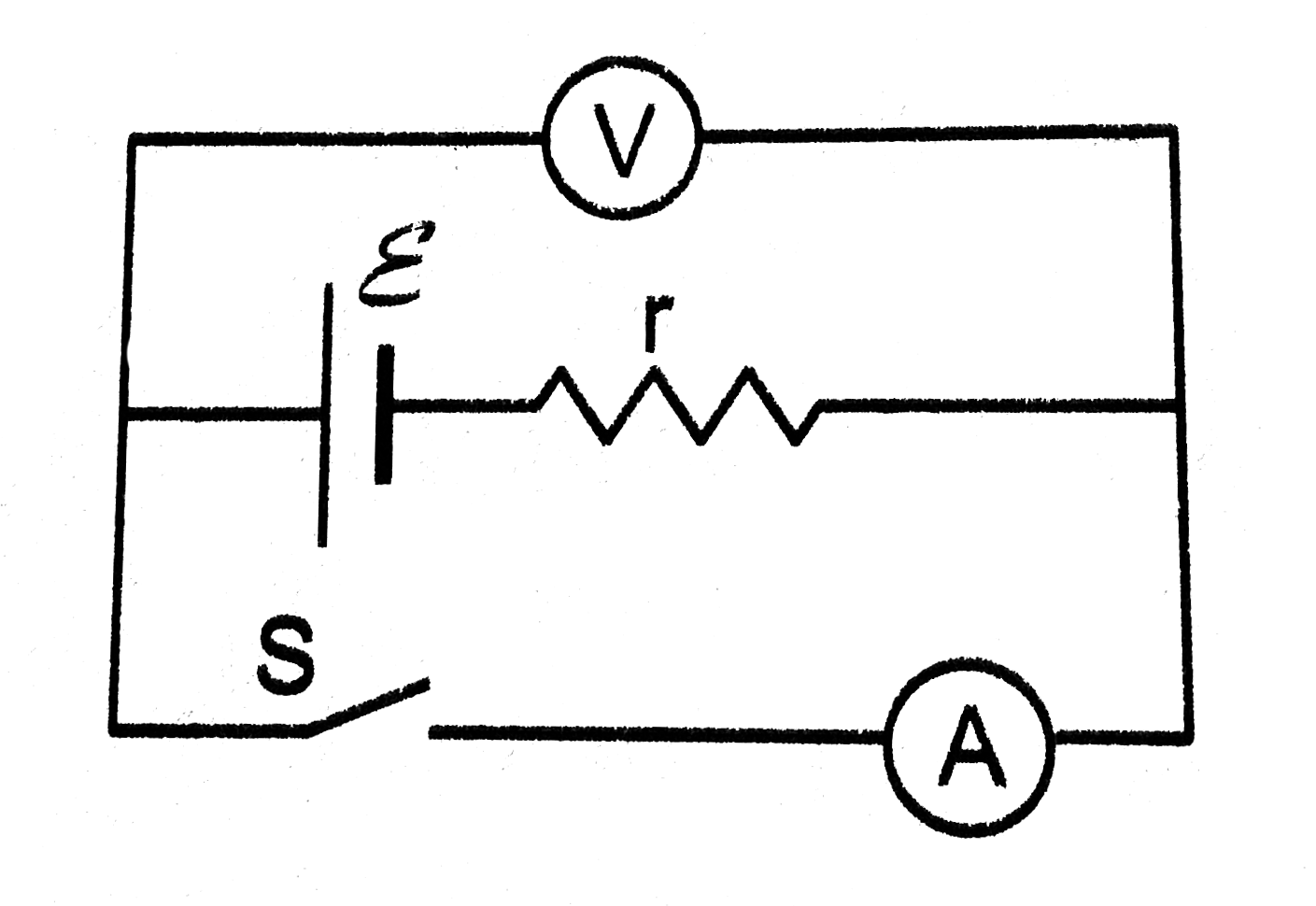
View SolutionThe potential difference between the terminals of a battery of emf 6.0V and internal resistance`1 (Omega)`drops to 5.8 V when connected across an external resistor. Find the resistance of the external resistor.
View SolutionThe potential difference between the terminals of a 6.0V battery is 7.2 V when it is being charged by a current of 2.0A.What is the internal resistance of the battery?
View SolutionThe internal resistance of an accumulator battery of emf 6V is `10(Omega)`when it is fully discharged,As the battery gets charged up.its internal resistance decreases to `1(Omega)`The battery in its completely discharged state is connected to a charger which maintains a constant potential difference of 9 V.Find the current through the battery (a)just after the connections are made and (b) after a long time when it is completely charged.
View SolutionFind the value of `i_(1)//I_(2)`in figure if where R=10(Omega)`
View SolutionConsider `N=n_(1)n_(2)`indentical cells, each of emf`(epsilon)` and internal resistance r. Suppose `n_(1)` cells are joined in series to forn a line and n_(2) such are connected in parallel. The combination drives a current in an external resistance R.(a) find the current in the external resistance, (b) Assuming that `n_(1)`and n_(2) can be continuously varied, find the relation between `n_(1) ,n_(2) R and r for which the current in R in maximum.
View SolutionA battery of emf 100V and a resistor of resistance `10k(Omega)`are joined in series. This system is used as a source to supply current to an external resistance R. If R is not greater than `100(Omega)`, the current through it is constant up to two significant digits. Find its value, This is the basic principle of a constant-current source.
View SolutionIf the reading of ammeter `A_(1)`in figure is 2.4 A, what will the ammeter `A_(2) and A_(3)`read? Neglect the resistances of the ammeter.

View SolutionThe resistance of the rheostat shown in figure is `30(Omega)`. Neglecting the meter resistance,find the minimum and maximum currents through the ammeter as the rheostat is varied.
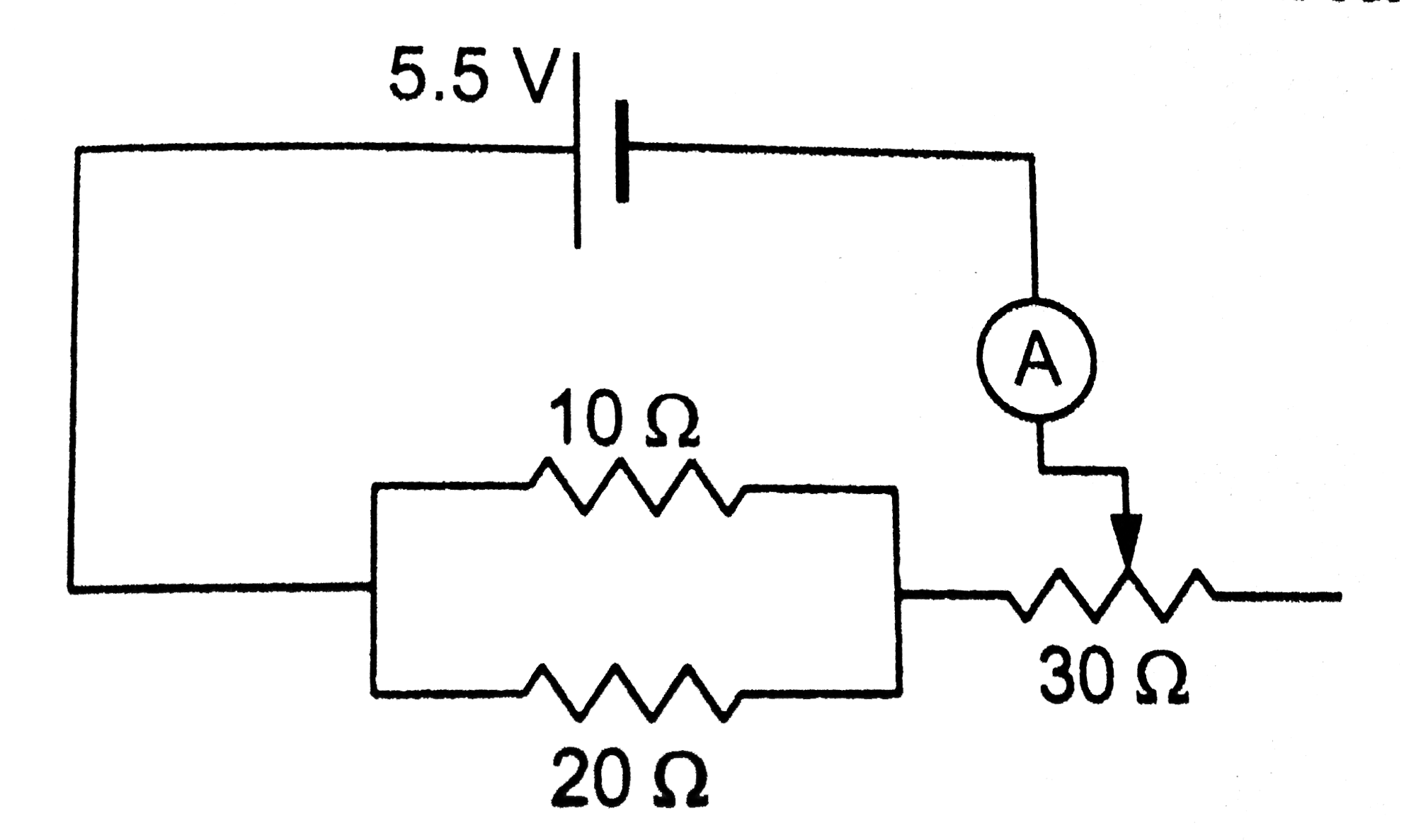
View SolutionThree bulbs,each having a resistance of `180(Omega)`are connected in parallel to an ideal battery of emf60V. Find the current delivered by the battery when (a)all the bulbs are switched on,(b)two of the bulbs are switched on and (c )only one bulb is switched on.
View SolutionSuppose you have three resistor of `(20 Omega),(50 Omega)and (100 Omega)`.what minimum and maximum resistances can you obtain from these resistors?
View SolutionA bulb is made using two filaments.A switch selects whether the filaments are used individually or in parallel. When used with a 15V battery, the bulb can be operated at 5W ,10W and 15W. What should be the resistances of the filaments ?
View Solution100A exists in the `5k(Omega)` resistor, find the currents in the other three resistors .what is the potential difference between the points A and B?

View SolutionAn ideal battery sends a current of 5A in a resistor. When another resistor of value `10 Omega` is connected in parallel ,the current through the battery is increased to 6A.Find the resistance of the first resistor.
View SolutionFind the equivalent resistances of the network shown in figurebetween the points a and b.
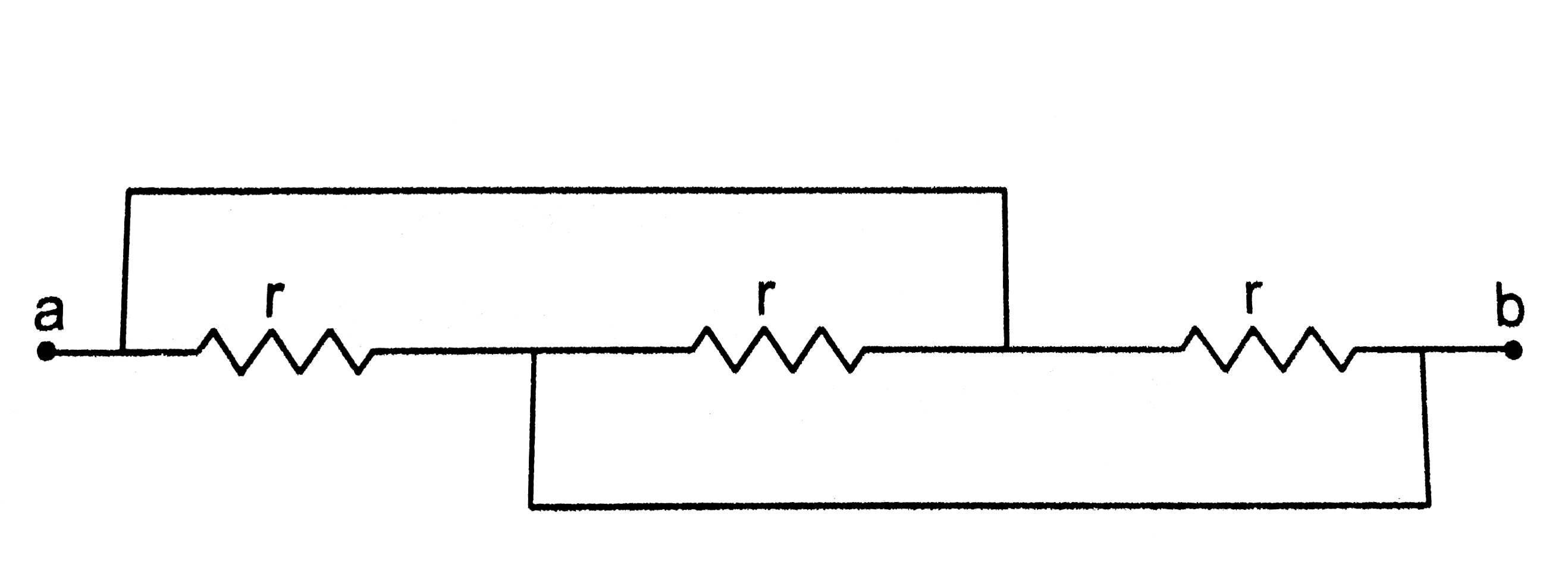
View SolutionA wire of resistance `15.0(Omega)`is bent to form a regular hexagon ABCDEFA.Find the equivalent resistance of the loop between the points (a)A and B, (b)A and C and (c )A and D .
View SolutionConsider the circuit shown in figure.Find the current through the`10(Omega)`resistor when the switch S is (a)open (b)closed .
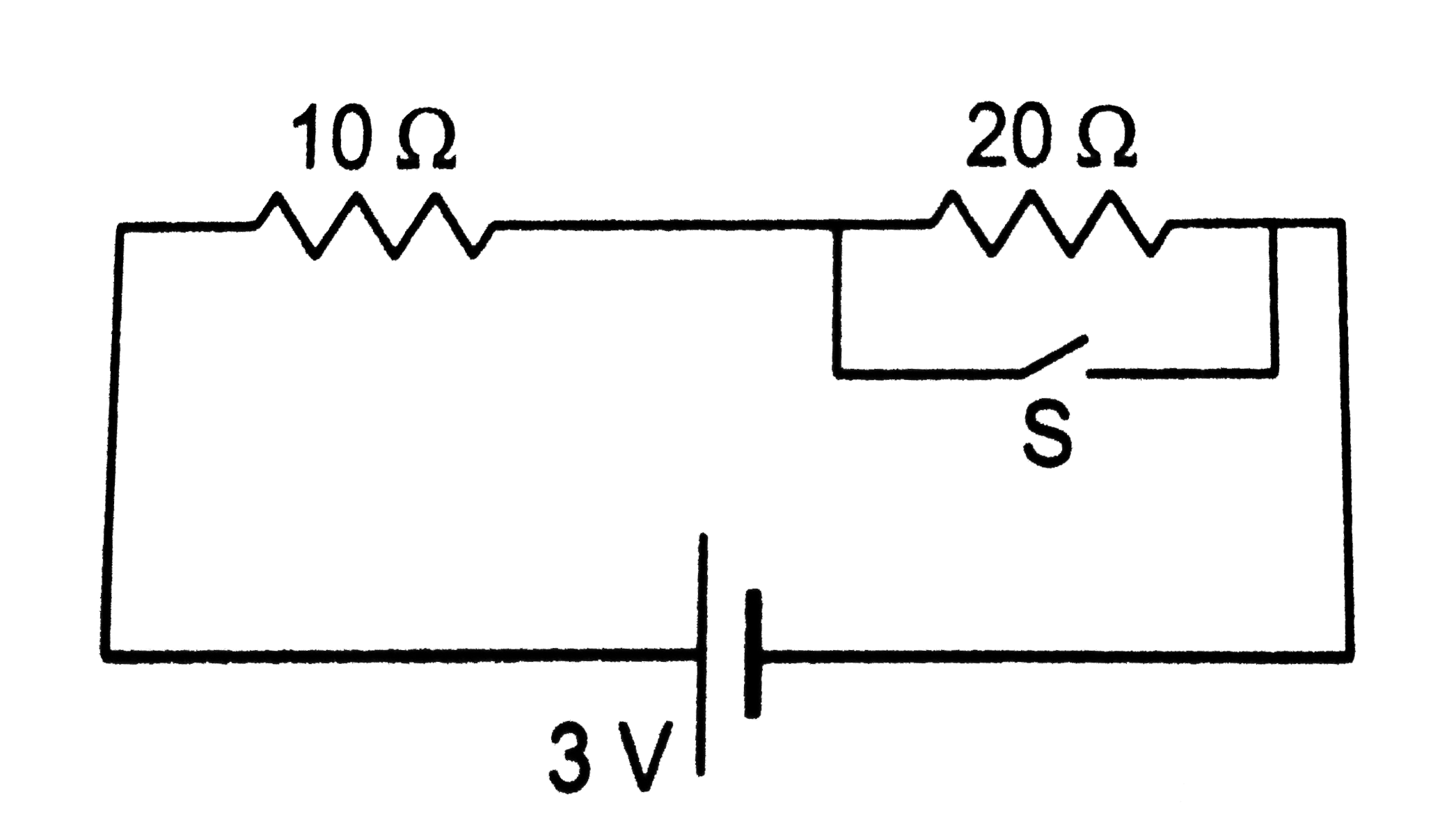
View SolutionFind the currents through the three resistors shown in Figure
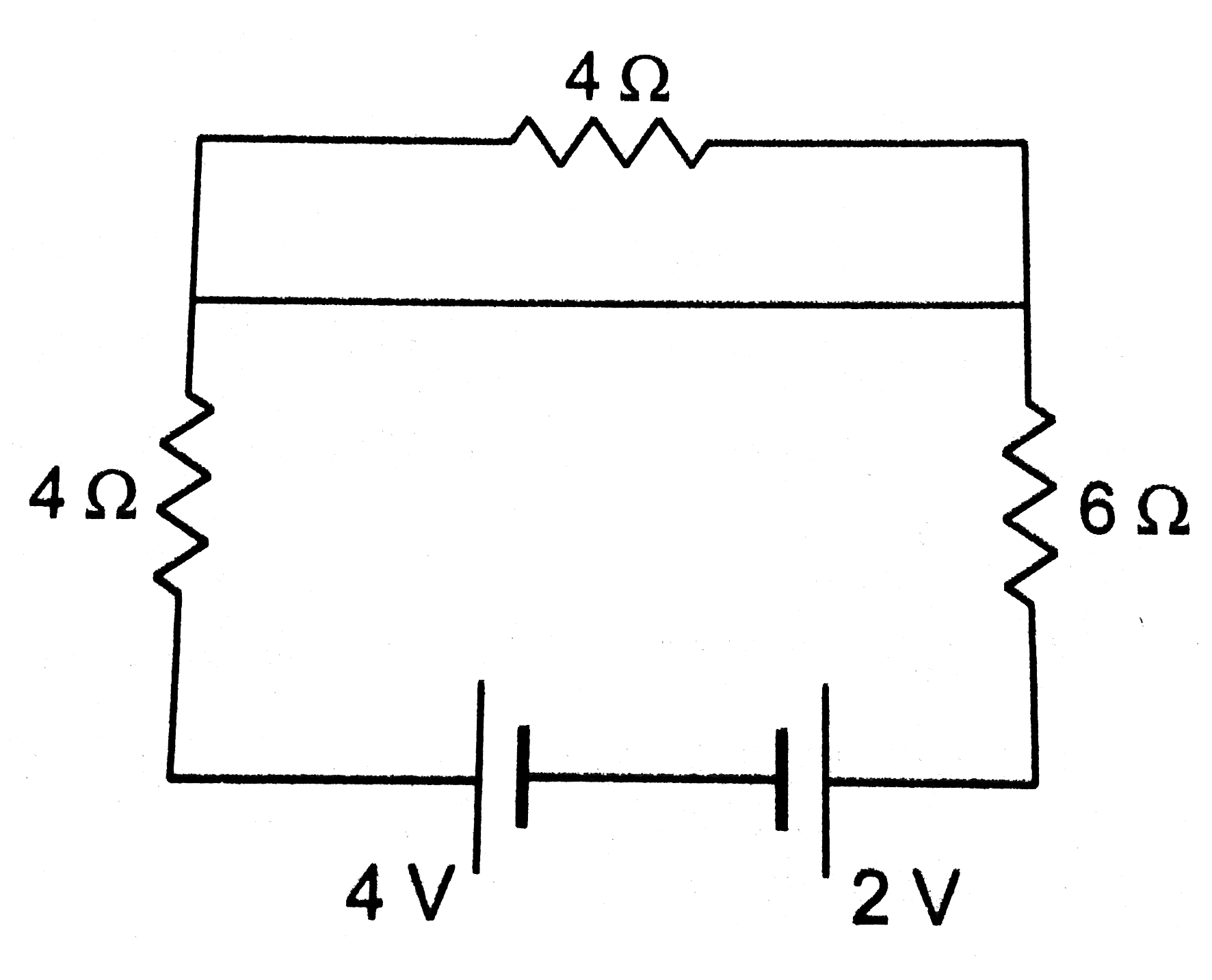
View SolutionShown a part of an electric circuit, The potentials at the points a,b,and c are 30V,12V,and 2V respectively.Find the currents through the three resistors.

View SolutionEach of the resistors shown in figure has a resistances of `10(Omega)`and each of the batteries has an emf of 10V.Find the currents through the resistors a and b in the two circuits.

View SolutionFind the potential difference `V_(a)-V_(b)`in the circutis shown in figure
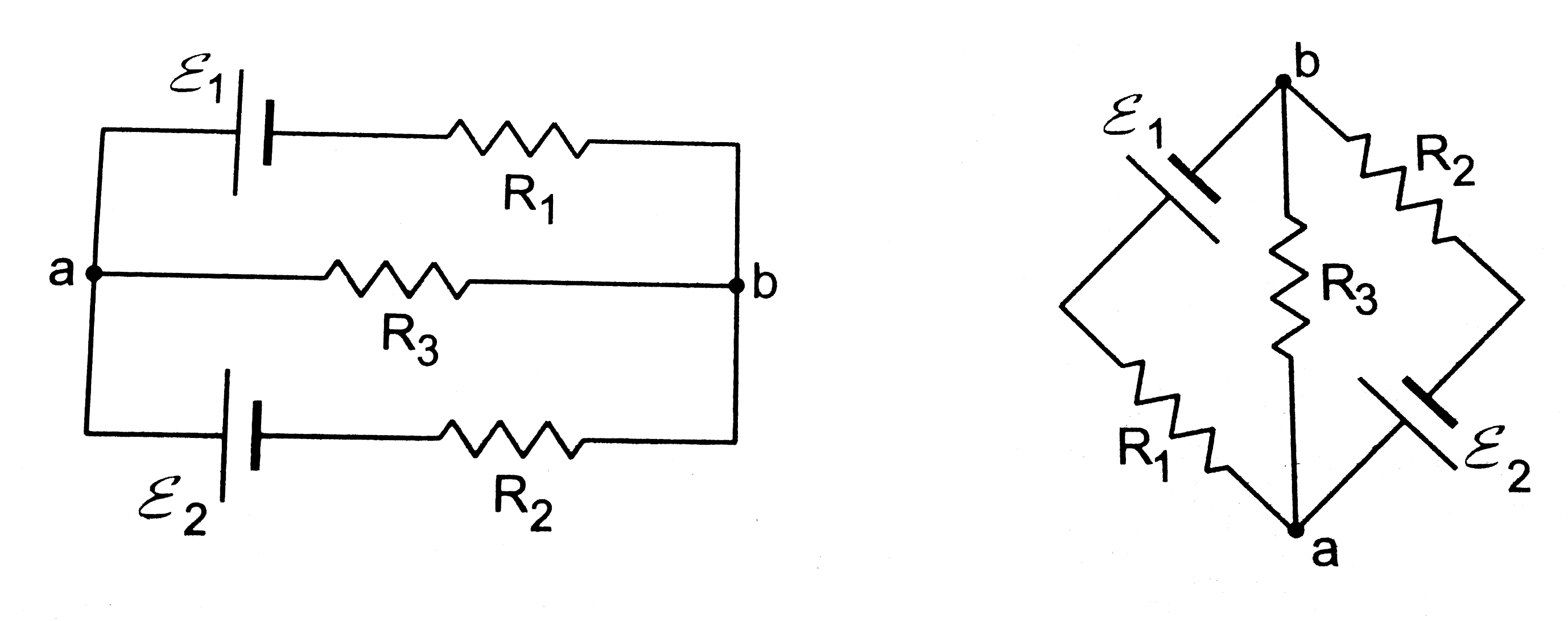
View SolutionIn the circuit shown in figure ,`(epsilon)_(1)=3V,(epsilon)_(2)=2V,(epsilon)_(3)=1V and r_(1)=r_(2)=r_(3)=1(Omega)`.Find the potential difference between the points A and B and the current through each branch.
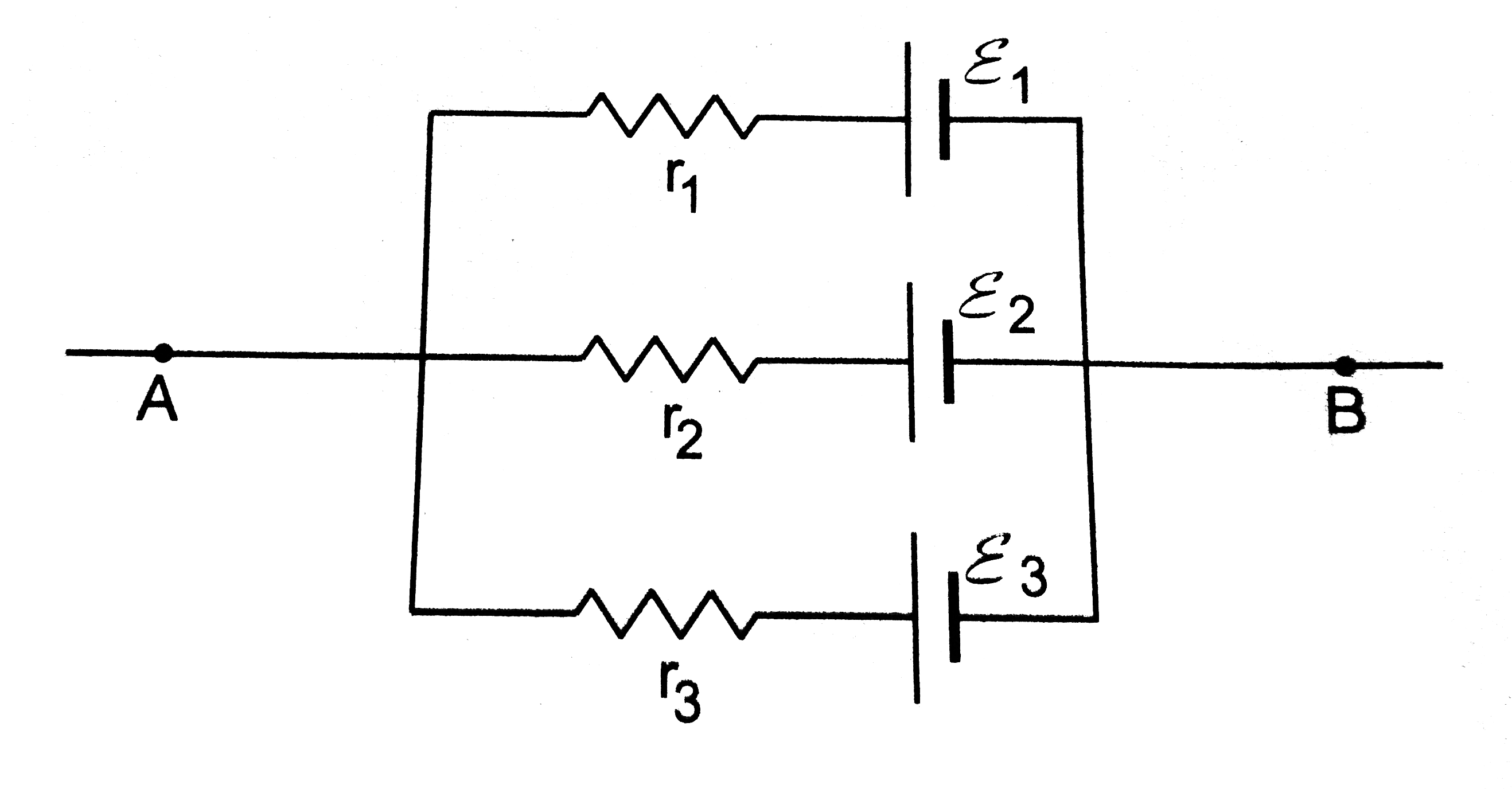
View SolutionFind the current through the `10(Omega)`resistor shown in figure.
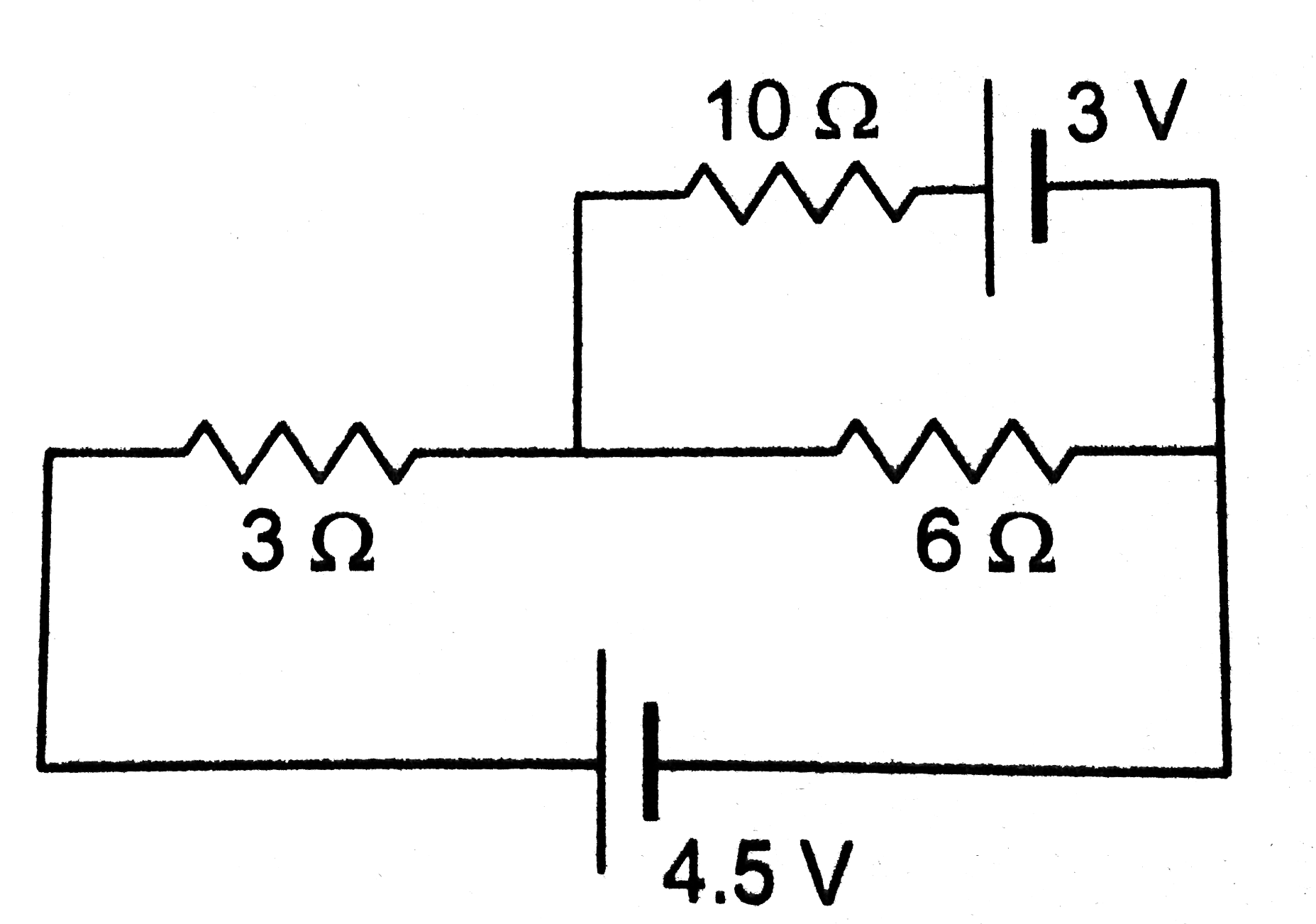
View SolutionFind the current in the resistor shown in figure.

View SolutionWhat should be the value of R in figure fo which the current in it is zero?

View SolutionFind the equivalent resistance of the circuit shown in figure between the points a and b.Each resistor has a resistances `r`.

View SolutionFind the current measured by the ammeter in the circuit shown in figure
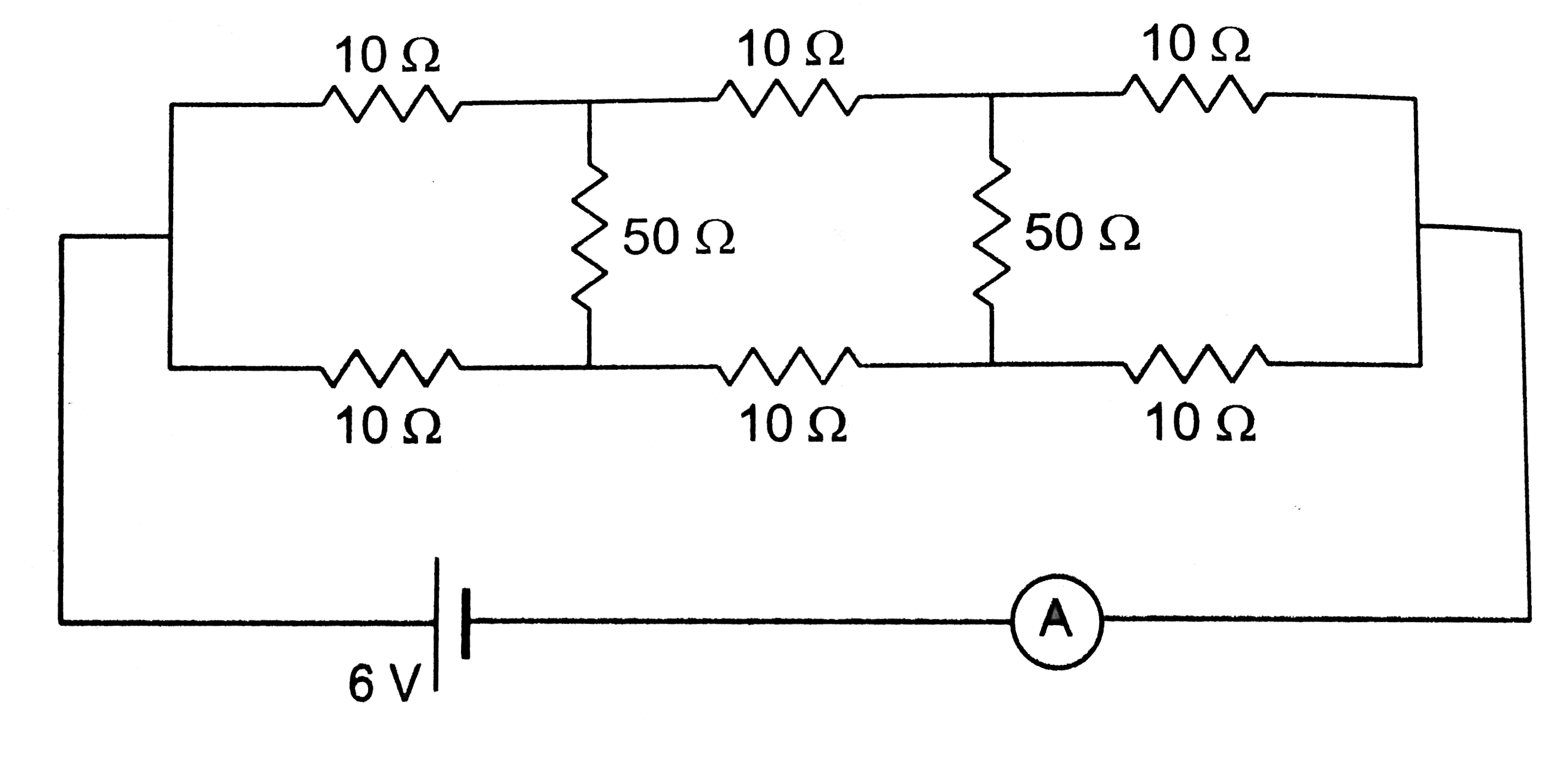
View SolutionConsider the circuit shown in figure.Find (a) the current in the circuit, (b) the potential drop across the `(5 Omega)`resistor,(c )the potential drop across the `10(Omega)`resistor.(d)Answer the parts (a),(b)and (c )with reference to figure.

View SolutionTwelve wire, each having equal resistance r, are joined to form a cube as shown in figure.Find the equivalent resistance between the diagonally opposite points a and `f`.
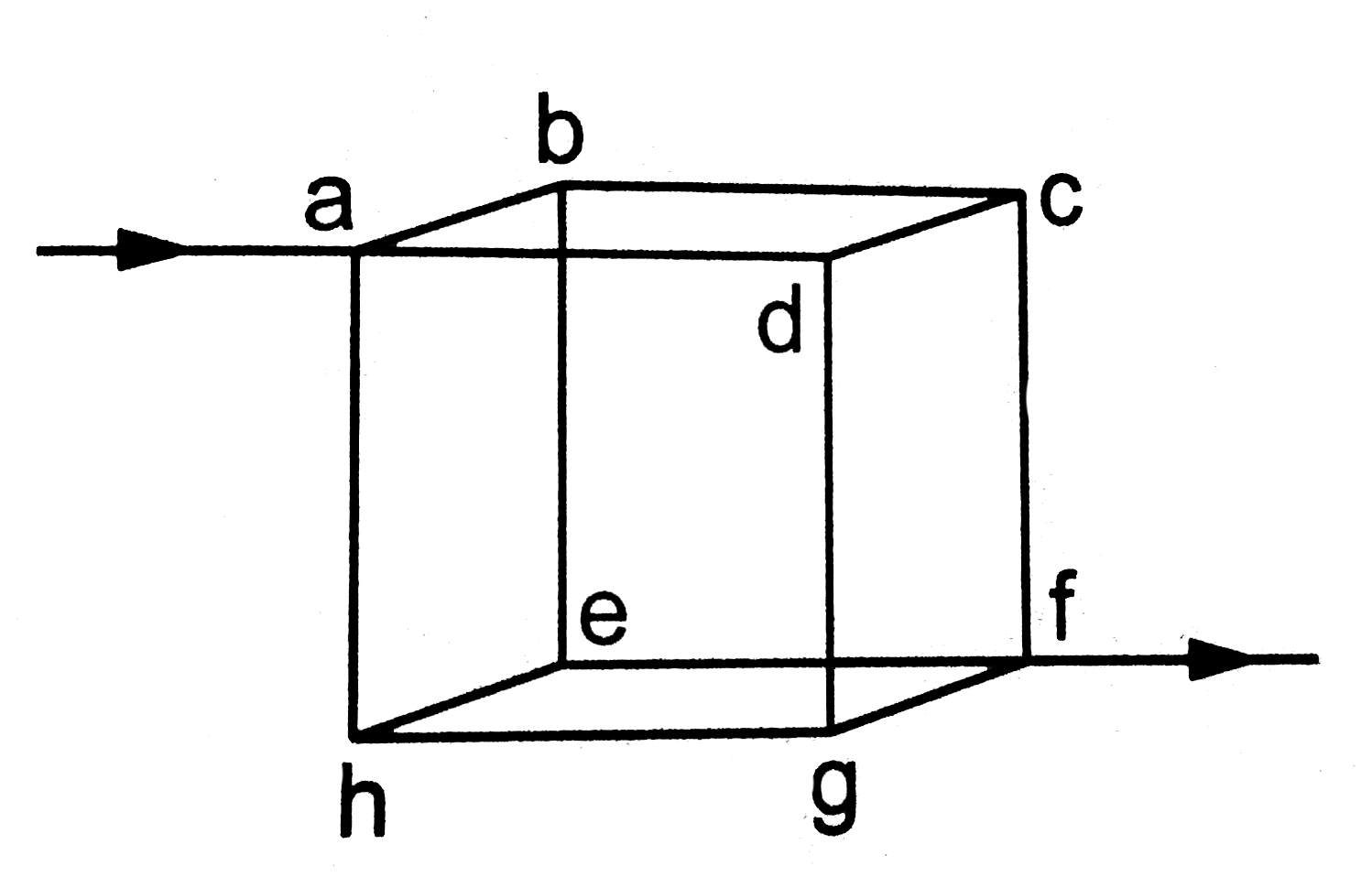
View SolutionFind the equivalent resistances of the network shown in figure between the point a and b.
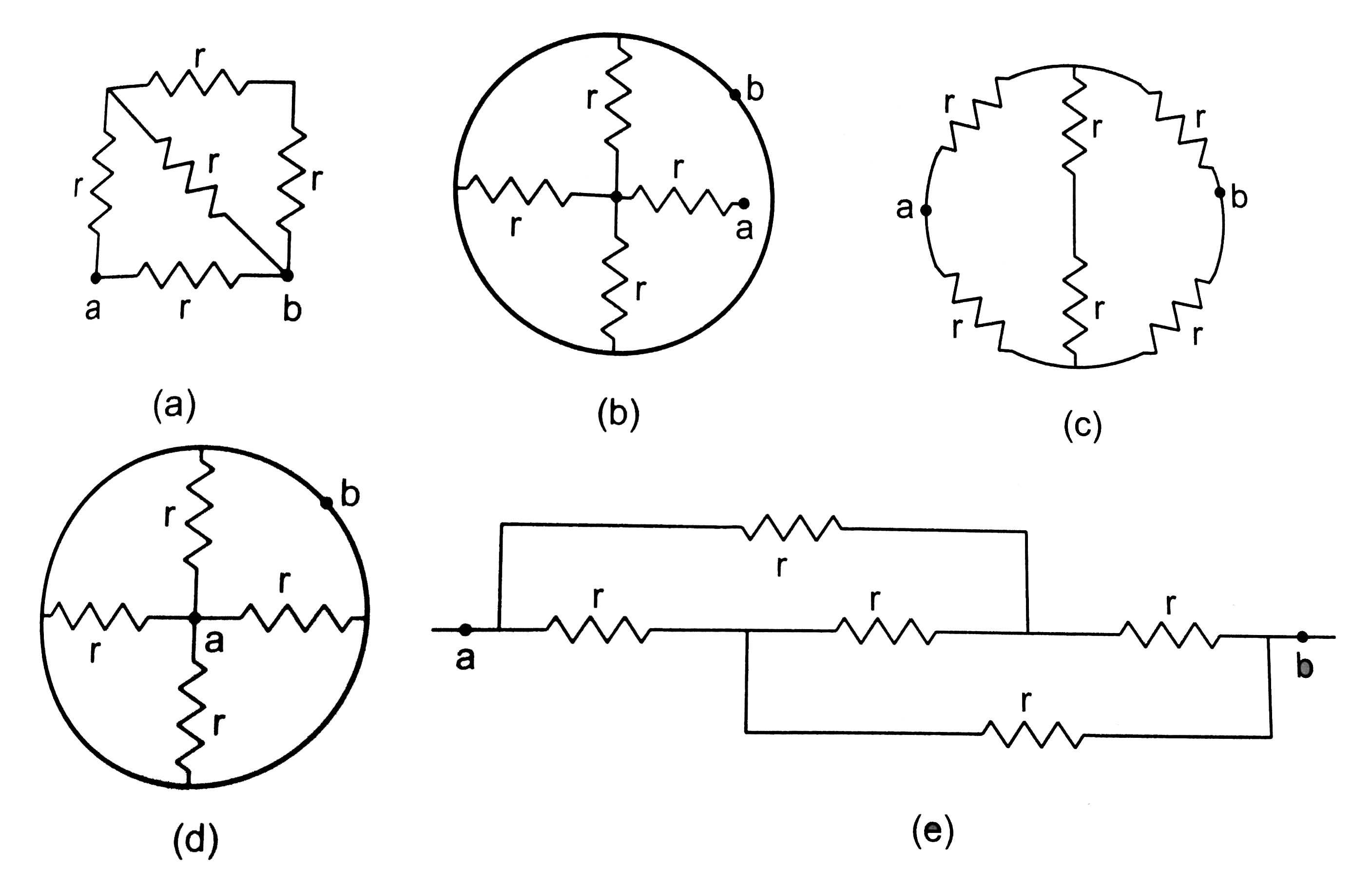
View SolutionAn infinite ladder is constructed with `1(Omega)`and `2(Omega)`resistor as shown in figure.(a)Find the effective resistance between the point A and B. (b) Find the current that passes through the `(2 Omega)` resistor nearest to the battery.

View SolutionThe emf `(epsilon)`and the internal resistance r of the battery shown in figure are 4.3V and `1.0 Ohm` respectively.The external resistance R is `50 ohm`.The resistances of the ammeter and voltmeter are `2.0 ohm and `200ohm respectively.(a)Find the reading of the two meters.(b) The switch is thrown to the other side, What will be the readings of the two meters now?
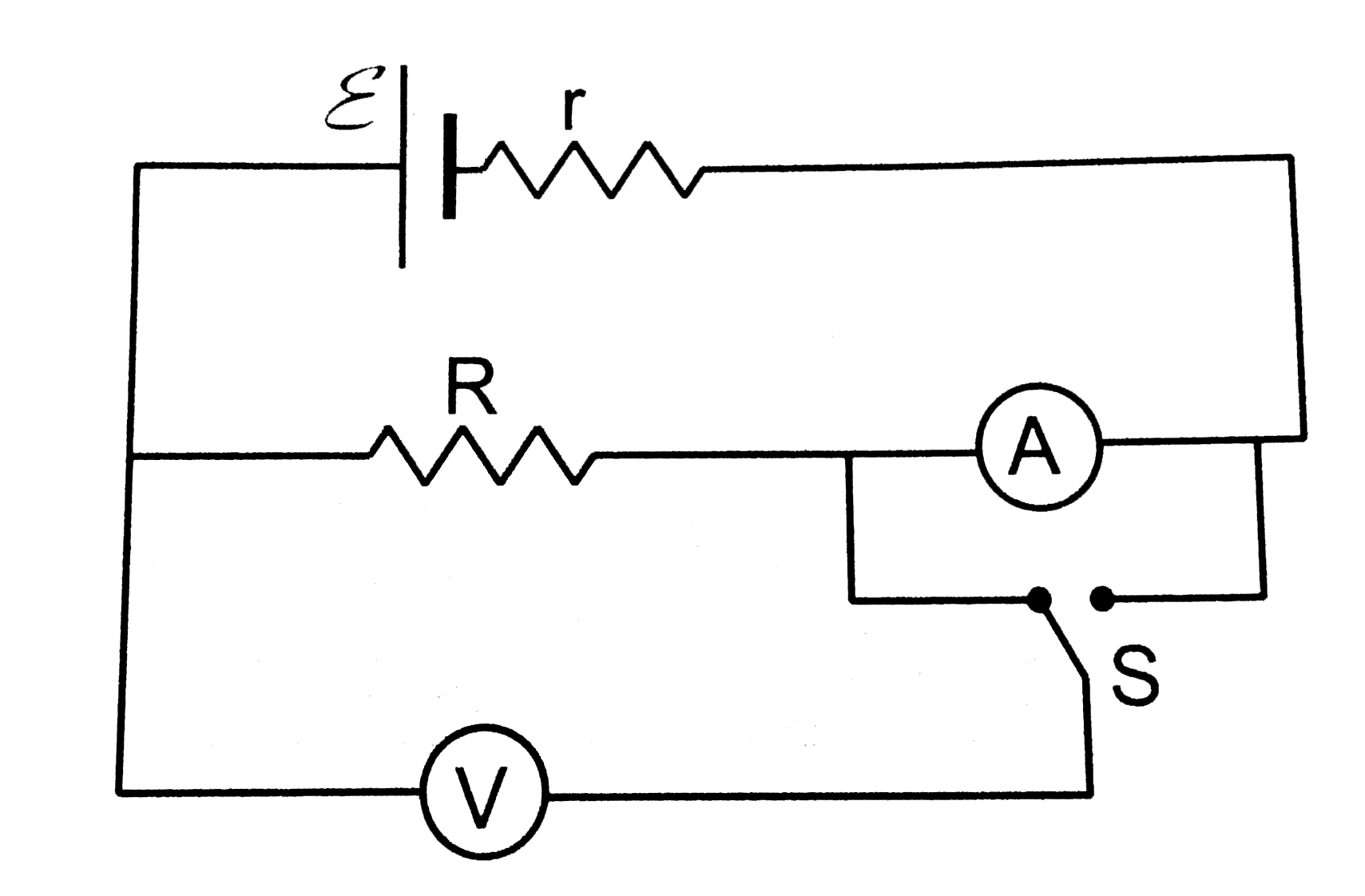
View SolutionA voltmeter of resistances `400(Omega)`is used to measure the potential difference across the `100(Omega)`resistor in the circuit shown in figure.(a) What will be the reading of the voltmeter ?(b) What was the potential difference across `100(Omega)`before the voltmeter was connected ?

View SolutionThe voltmeter shown in figure reads 18V across the `50(Omega)`resistor. Find the resistance of the voltmeter.
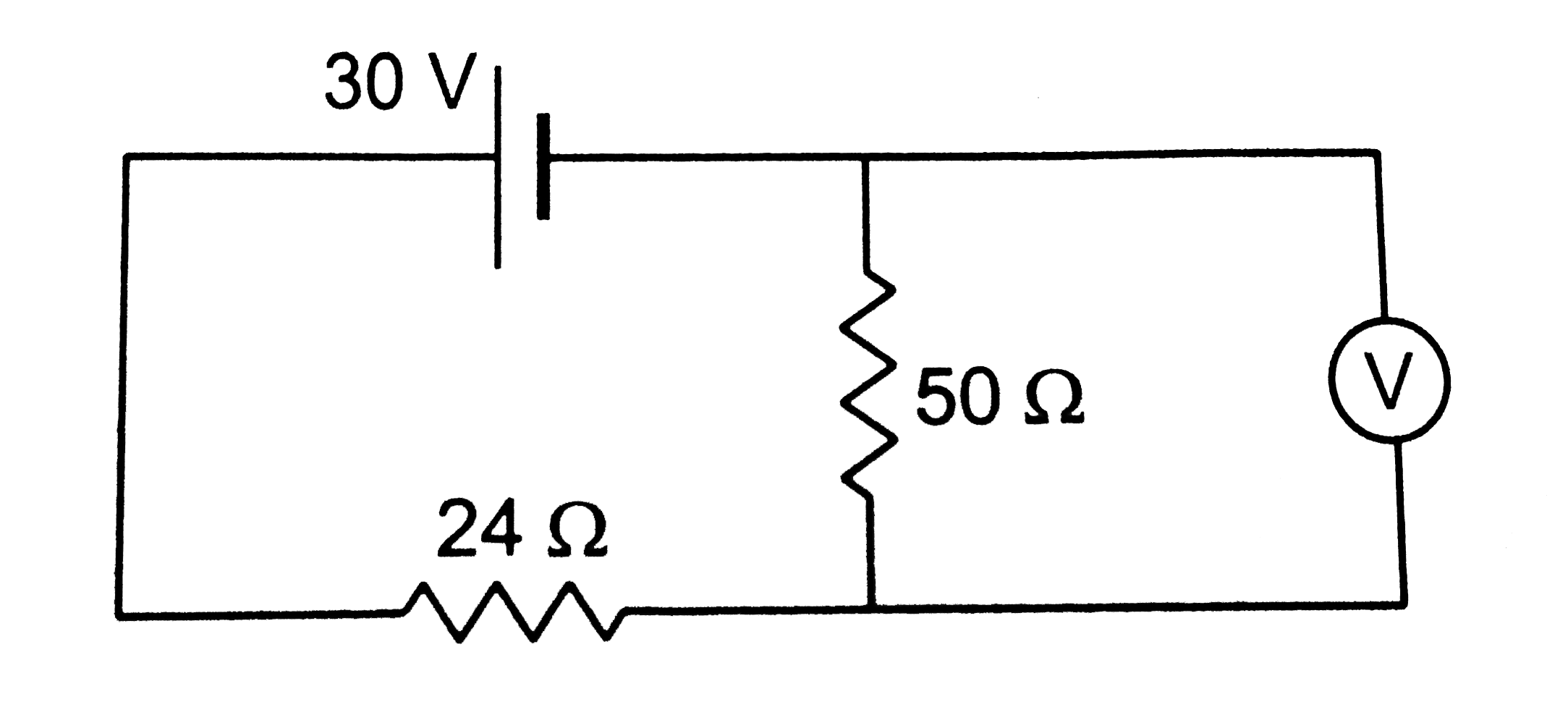
View SolutionA voltmeter consists of a `25(Omega)` coil connected in series with a `575(Omega)`resistor. The coil takes 10mA for full scale deflection.What maximum potential difference can be measured on this voltmeter?
View SolutionAn ammeter is to be constructed which can read currents up to 2.0A. If the coil has a resistance of `25(Omega)`and takes 1mA for full-scale deflection, what should be the resistance of the shunt used?
View SolutionA voltmeter coil has resistance `50.0(Omega)`and a resistor of `1.15k(Omega)`is connected in series.It can read potential differences upto 12 volts.If this same coil is used to construct an ammeter which can measure currents up to 2.0A ,What should be the resistance of the shunt used ?
View SolutionThe potentiometer wire AB shown in figure is 40 cm long. Where should the free end of the galvanometer be connected on AB so that the galvanometer may show zero deflection?
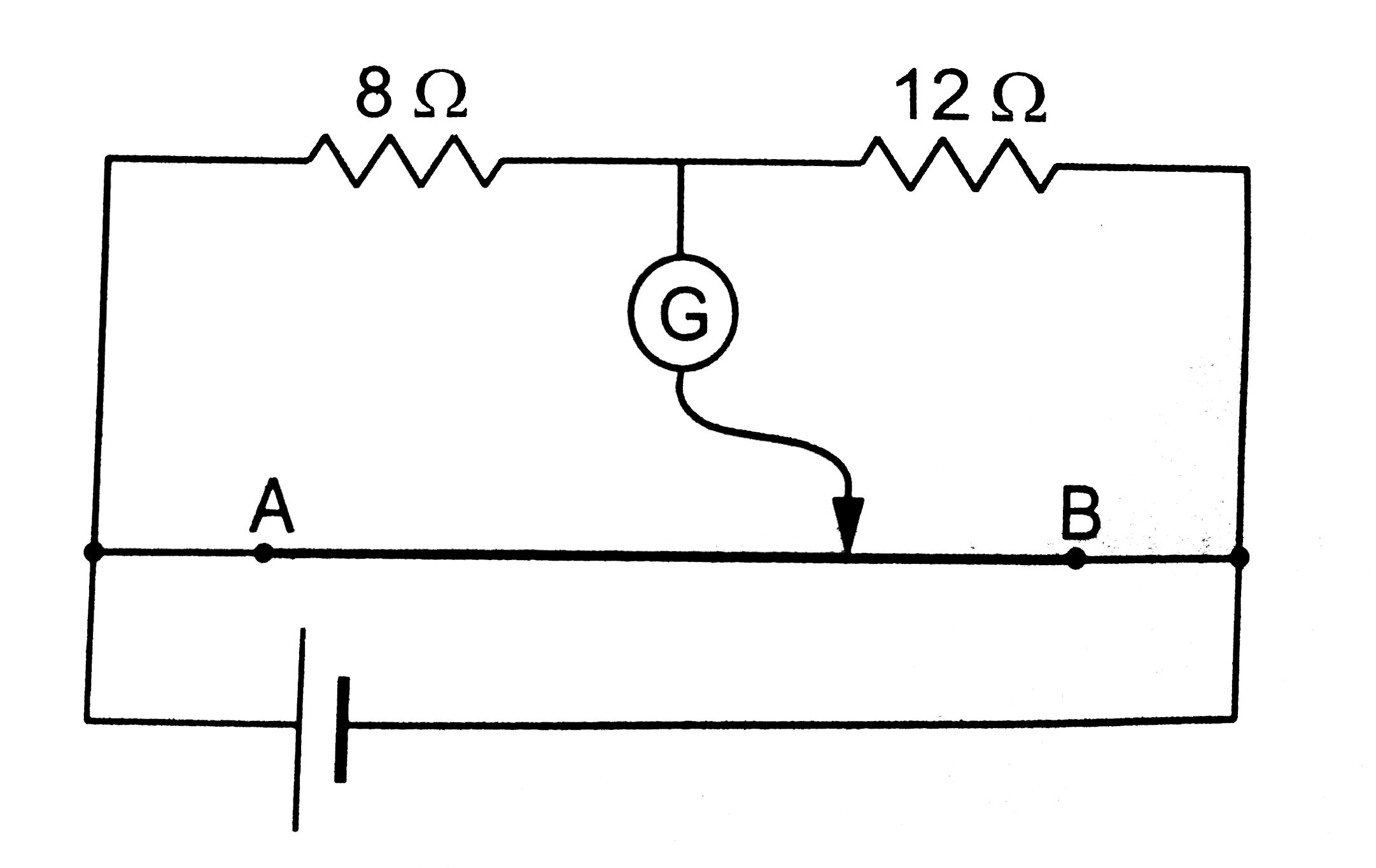
View SolutionThe potentiometer wire AB shown in figure is 50cm long.When AD=30cm, no deflection occurs in the galvanmeter.Find R.
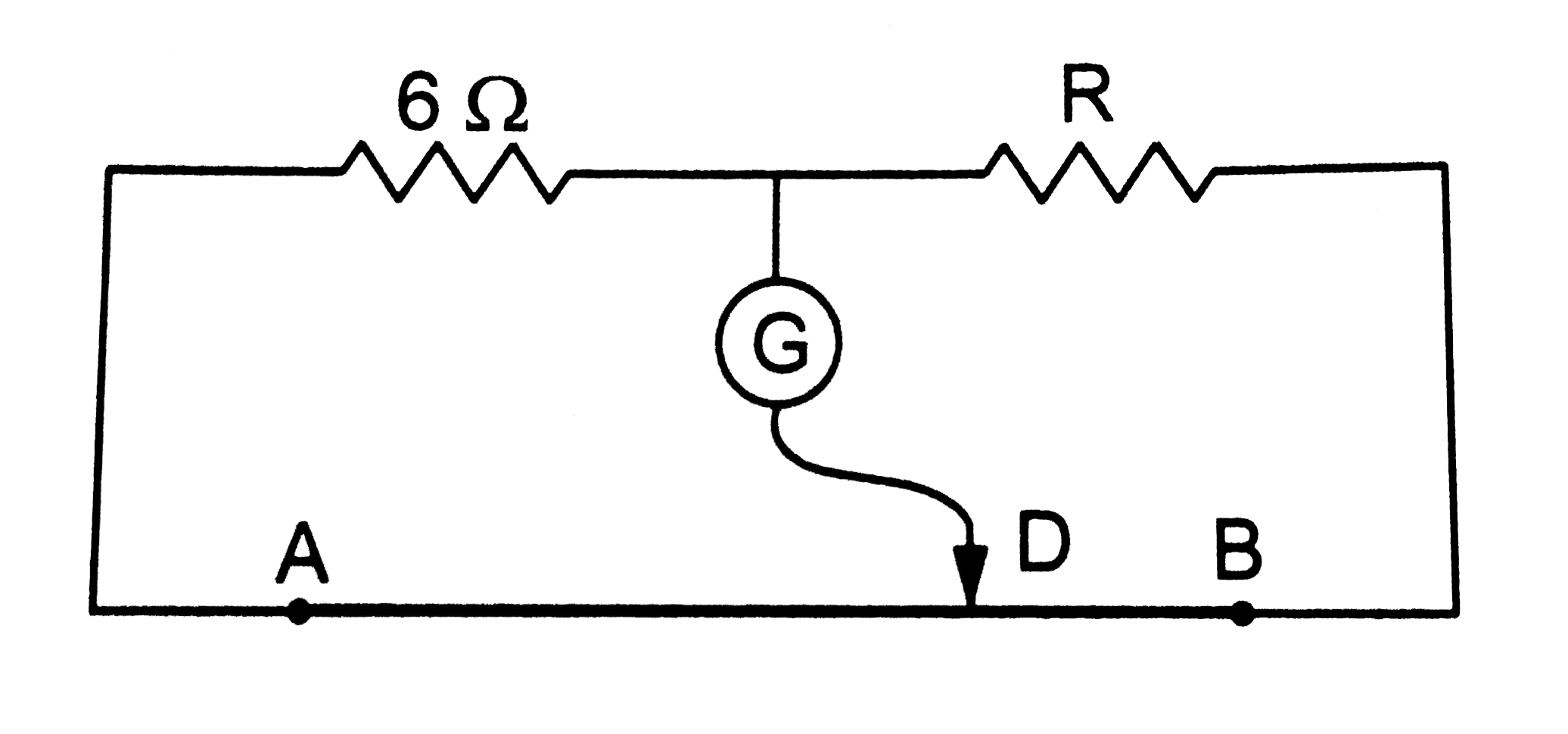
View SolutionA 6-volt battery of negligible internal resistance is connected across a uniform wire AB of length 100cm. The positive terminal of another battery of emf 4V and internal resistance `1(Omega)`is joined to the point A as shown in figure.Take the potential at B to be zero. (a) What are the potentials at the poits A and C ? (b) At which point D of the wire AB, the potential is equal to the potential at C?(c ) If the point C and D are connected by a wire, what will be the current through it ? (d) If the 4V battery is replaced by 7.5V battery,wht would be the answer of parts (a) and (b) ?
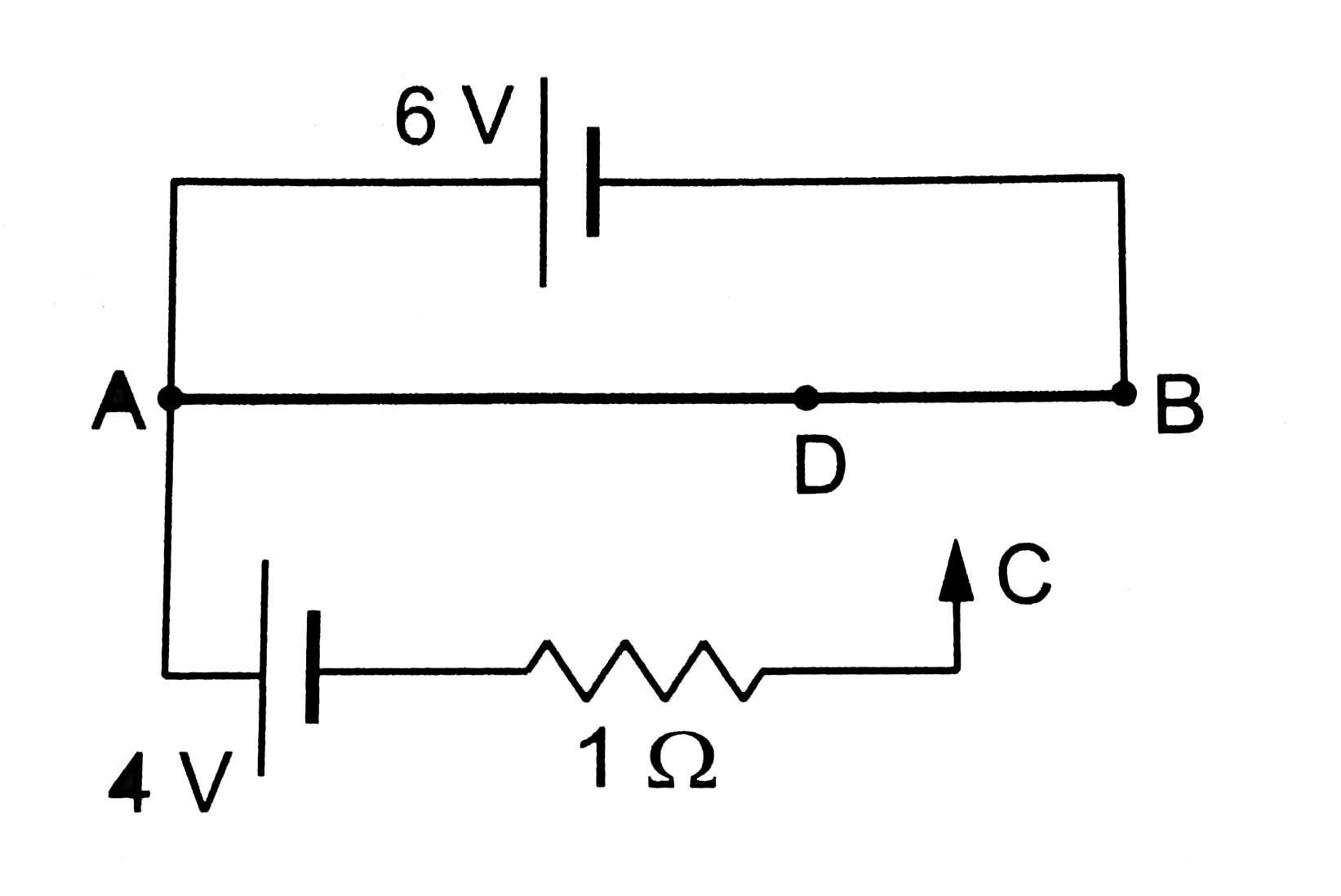
View SolutionConsider the potentiometer circuit arranged as in figure. The potentiometer wire is 600cm long. At what distance from the point A should the jockey touch the wire to get zero deflection in the galvanometer? b) If the jockey touches the wire at a distance of 560cm from A, What will be the current in the galvanometer?
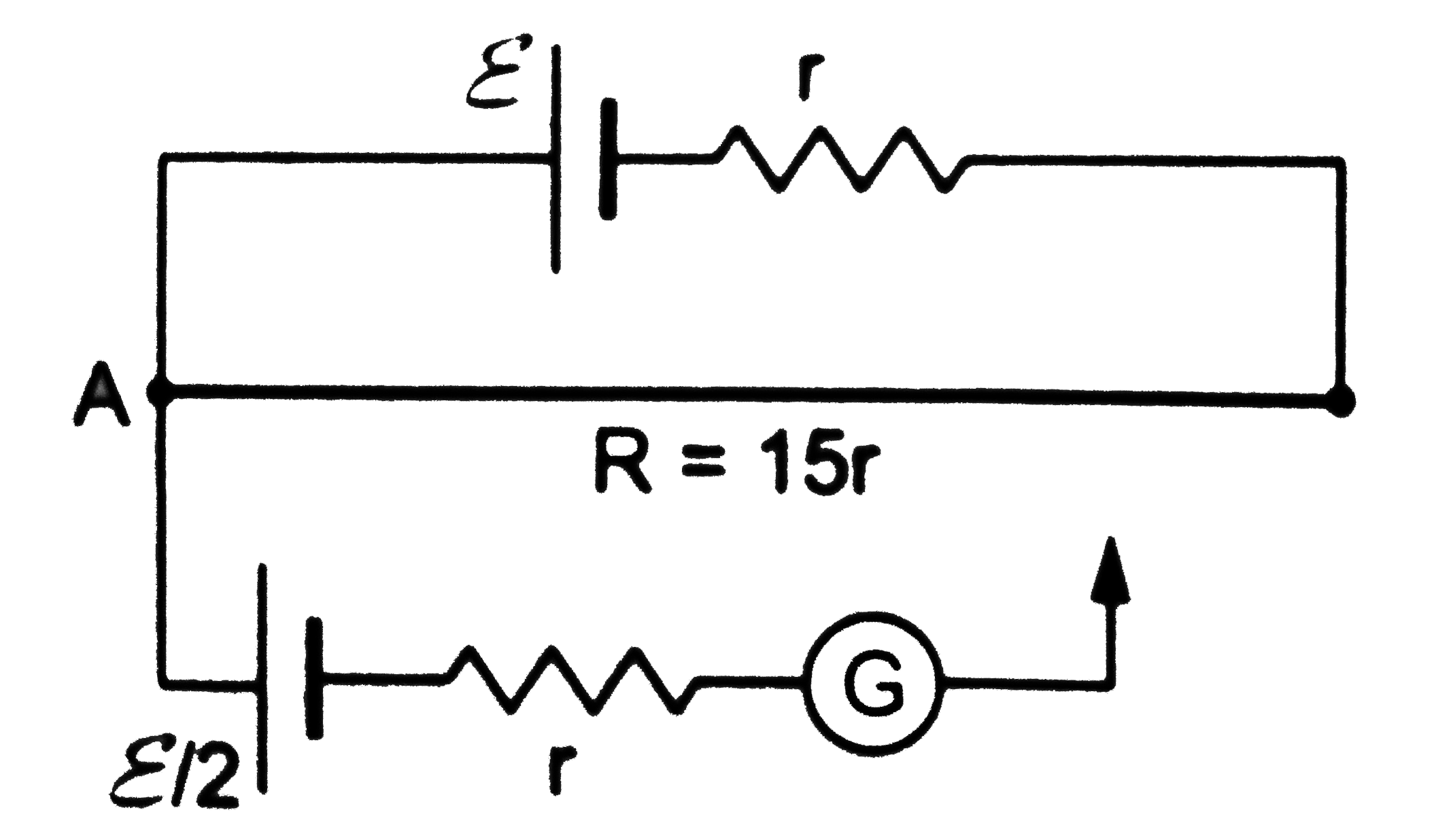
View SolutionFind the charge on the capacitor shown in figure
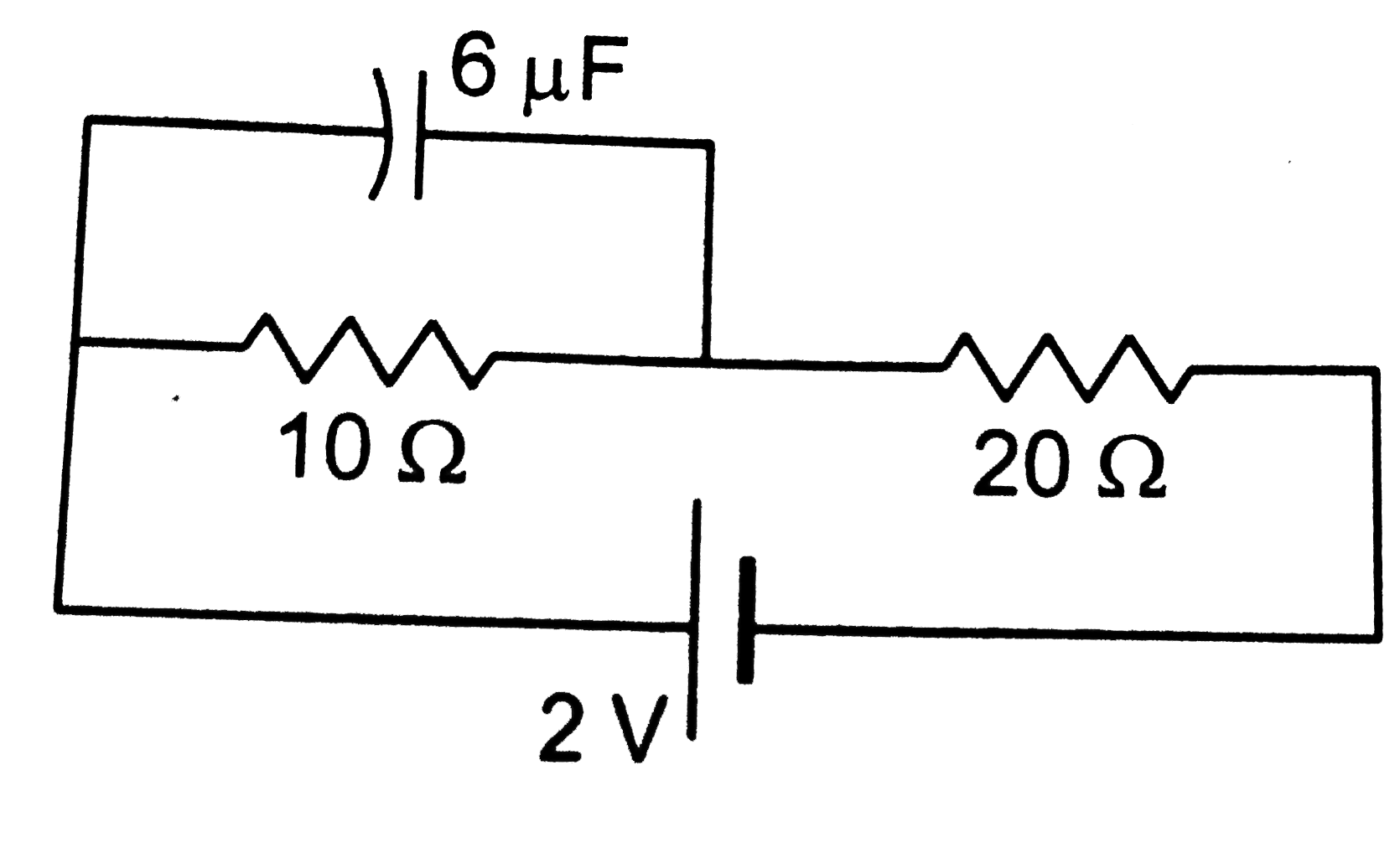
View Solution(a) Find the current in the `20(Omega)`resistor shown in figure.(b)If a capacitor of capacitance `4(mu)F is joined between the point A and B,what would be the electrostatic energy stored in it in steady state?
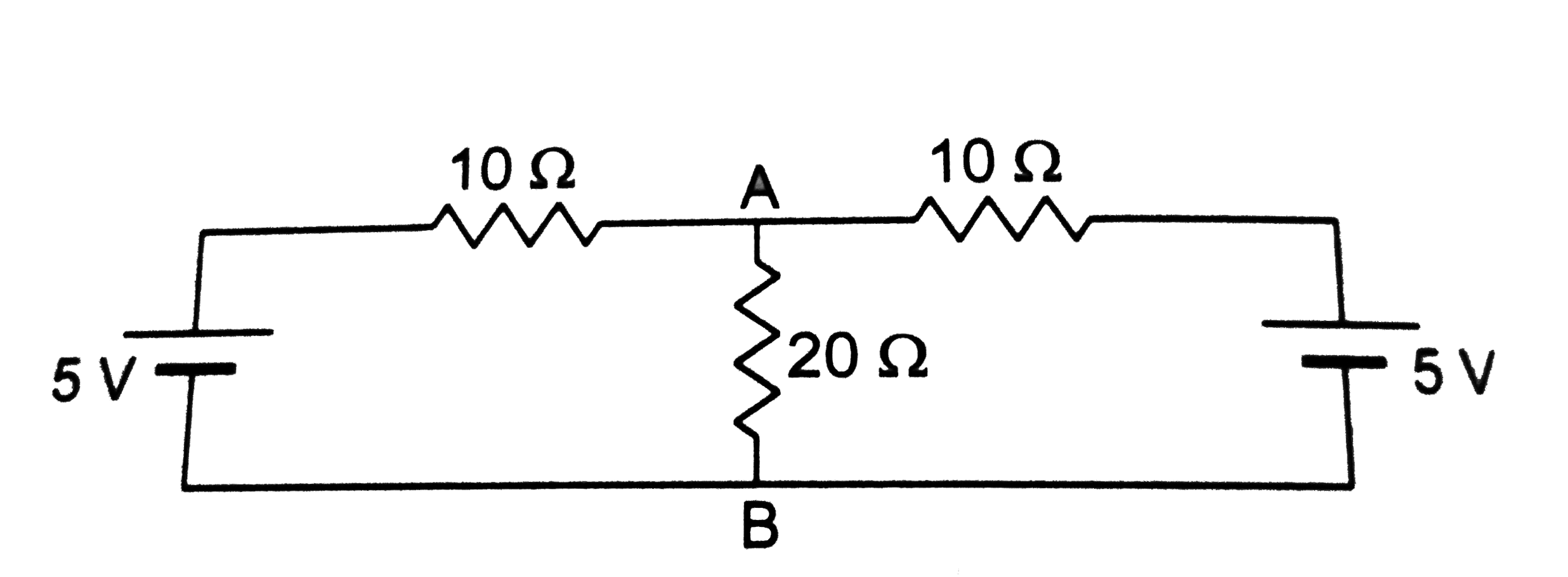
View SolutionFind the charge on the four capacirtors of capacitances `1(mu)F,2(mu)F,3(mu)F,and 4(mu)F, shown in figure.
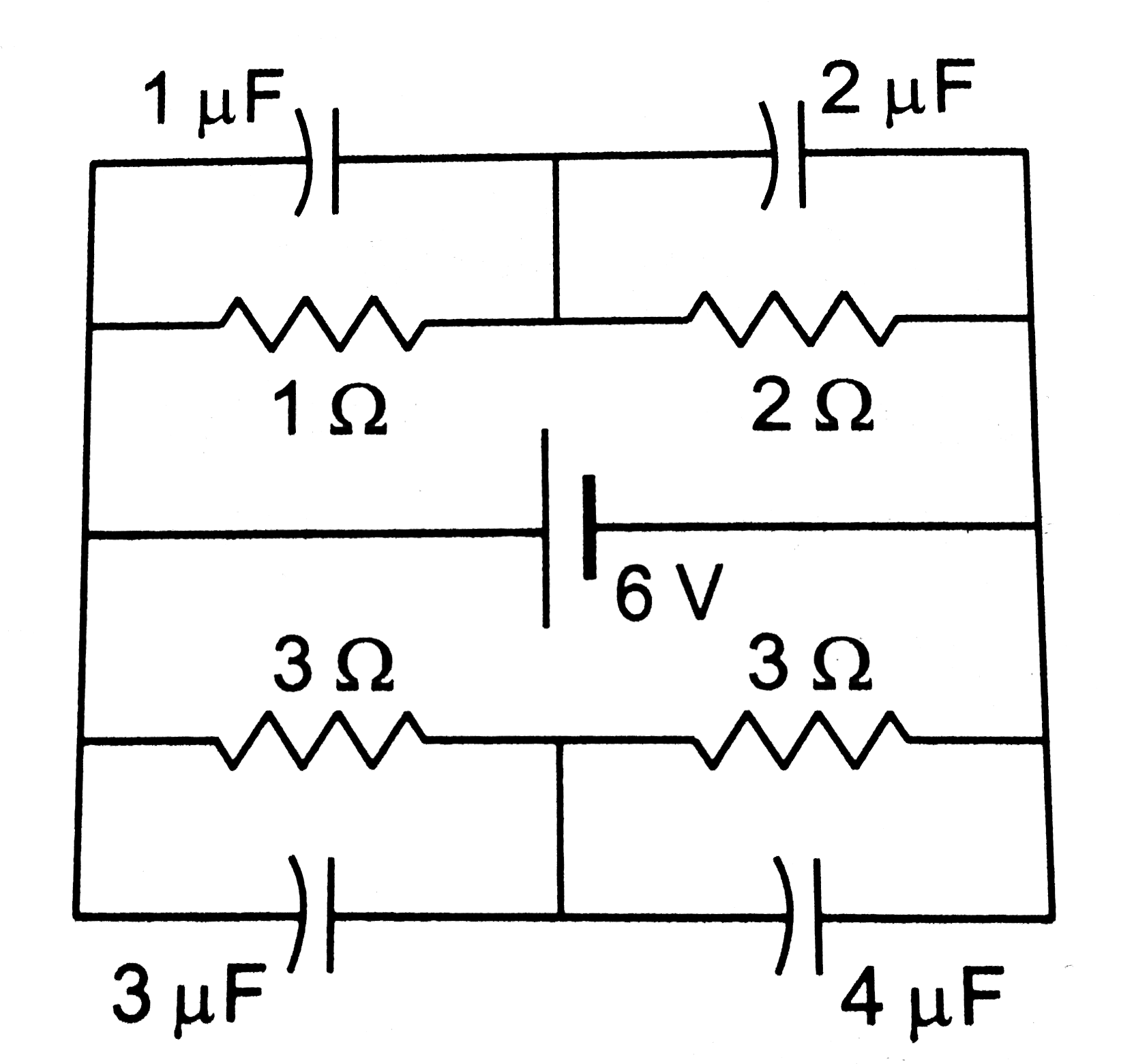
View Solutionfind the potential difference between th point A and B and between the point B and C of figure in steady state.
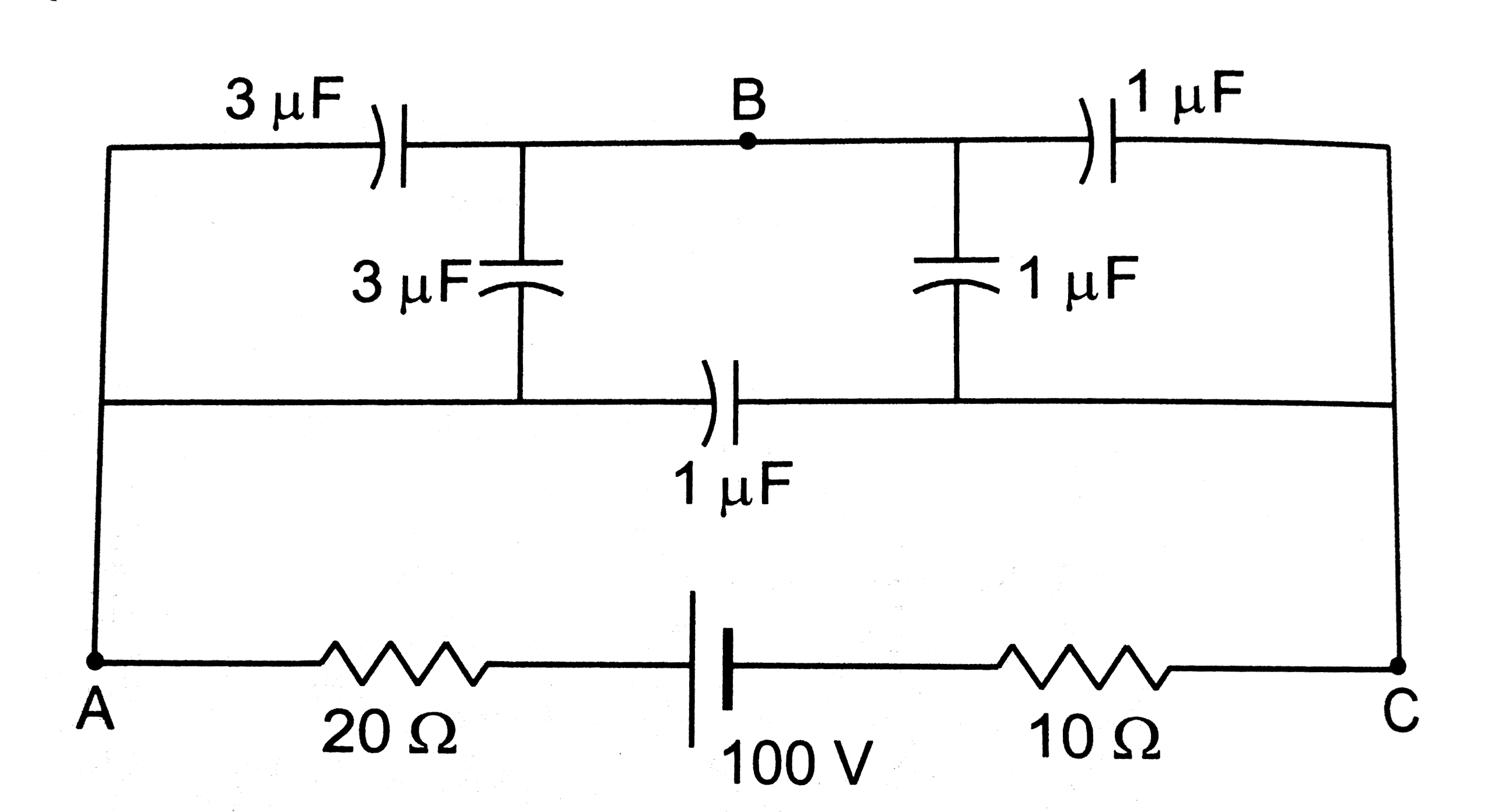
View SolutionA capacitance `C`, a resistance R and an emf `(epsilon)`are connected in series at t=0.What is the maximum value of (a) the potential difference across the resistor, (b) the current in the circuit,(c )the potential difference across the capacitor, (d) the energy stored in the capacitor ,(e)the power delivered by the battery and (f) the power converted int heat.
View SolutionA parallel-plate capacitor with plate are `20cm^(2)`and plate separation 1.0mm is connected to a battery .The resistance of the circuit is `10k(Omega)`.Find the time constant of the circuit.
View SolutionA capacitor of capacitance `10(mu)F` is connected to a battery of emf 2V.It is found that it takes 50 ms for the charge on the capacitor to bacome `12.6(mu)C.`find the resistance of the circuit.
View SolutionA `20(mu)F`capacitor is joined to a battery of emf 6.0V through a resistance of `100(Omega)`.find the charge on the capacitor 2.0ms after the connections are made .
View SolutionThe plates of a capacitor of capacitance `10(mu)F`,charged to `60(mu)C`,are joined together by a wire of resistance `10(Omega)`at t=0.Find the charge on the capacitor in the circuit at (a)t=0,(b)t=30(mu)s,(c )t=120(mu)s and (d)t=1.0ms.
View SolutionA capacitor of capacitance `8.0(mu)F` is connected to a bettery of emf 6.0V through a resistance of `24(Omega)`.Find the current in the circuit (a)just after the connections are made and (b)one time constant after the connections are made.
View SolutionA parallel-plate capacitor of plate area `40 cm^2` and separation between the plates `0.10 mm` is connected to a battery of `emf 2.0 V` through a `16 Omega` resistor. Find the electric field in the capacitor `10 ns` after the connections are made.
View SolutionA parallel-plalte capacitor has plate area `20cm^(2)`,plate separation 1.0mm and a dielectric slab of dielaectric constant 5.0 filling up the space between the plates.This capacitor is joined to a battery of emf 6.0V through a `100k(Omega)`resistor.find the energy of the capacitor `8.9(mu)s`after the connections are made.
View SolutionA `100(mu)F` capacitor is joined to a 24 V battery through a `1.0 M(Omega)` resistor.Plot qualitative graphs (a) between current and time for the first 10 minutes and (b)between charge and time for the same period .
View SolutionHow many time constants will elapse before the current in a charging RC circuit drops to half of its initial value?Answer the same question for a discharging RC circuit.
View SolutionHow many time constants will elapse before the charge on a capacitor falls to `0.1%`of its maximum value in a discharging RC circuit.
View SolutionHow many time constants will elapse before the energy stored in the capacitor reaches half of its equilibrium value in a charging RC circuit ?
View Solutionhow many time constants will elapse before the power delovered by the battery drops to half of its maximum value in an RC circuit ?
View SolutionA capacitor of capacitance C is connected to a battery of emf `(epsilon)`at t=0 through a resistance R. Find the maximum rate at which energy is stored in the capacitor. When does the rate has this maximum value?
View SolutionA capacitor of capacitance `12(mu)F`is connected to a battery of emf 6.00V and internal resistance `1.00(Omega)`through resistanceless leads. `12.0(mu)s after the connections are made, what will be (a) the current in the circuit, (b)the power delivered by the battery ,(c)the power dissipated in heat and (d)the rate at which the energy stored in the capacitor is increasing.
View SolutionA capacitance C charged to a potential difference V is discharged by connecting its plates through a resistance R. Find the heat dissipated in one time constant after the connections are made. Do this by calculating `int i^(2)Rdt`and also by finding the decrease in the energy stored in the capacitor.
View SolutionBy evaluating `int i^(2)Rdt`,show that when a capacitor is charged by connecting it to a battery through a resistor,the energy dissipated as heat equals the energy stored in the capacitor.
View SolutionA parallel-plate capacitor is filled with a delectric meterial having resistivity`(rho)`and dielectric constant K.The capcitor is charged and disconnected from the charging source. The capacitor is slowly discharged through the dielectric.Show that the time constant of the discharge is independent of all gepmetrical parameters like the plate area or separation between the plates. Find this time constant.
View SolutionFind the charge on each of the capacitor 0.20ms after the switch S is closed in Figure.
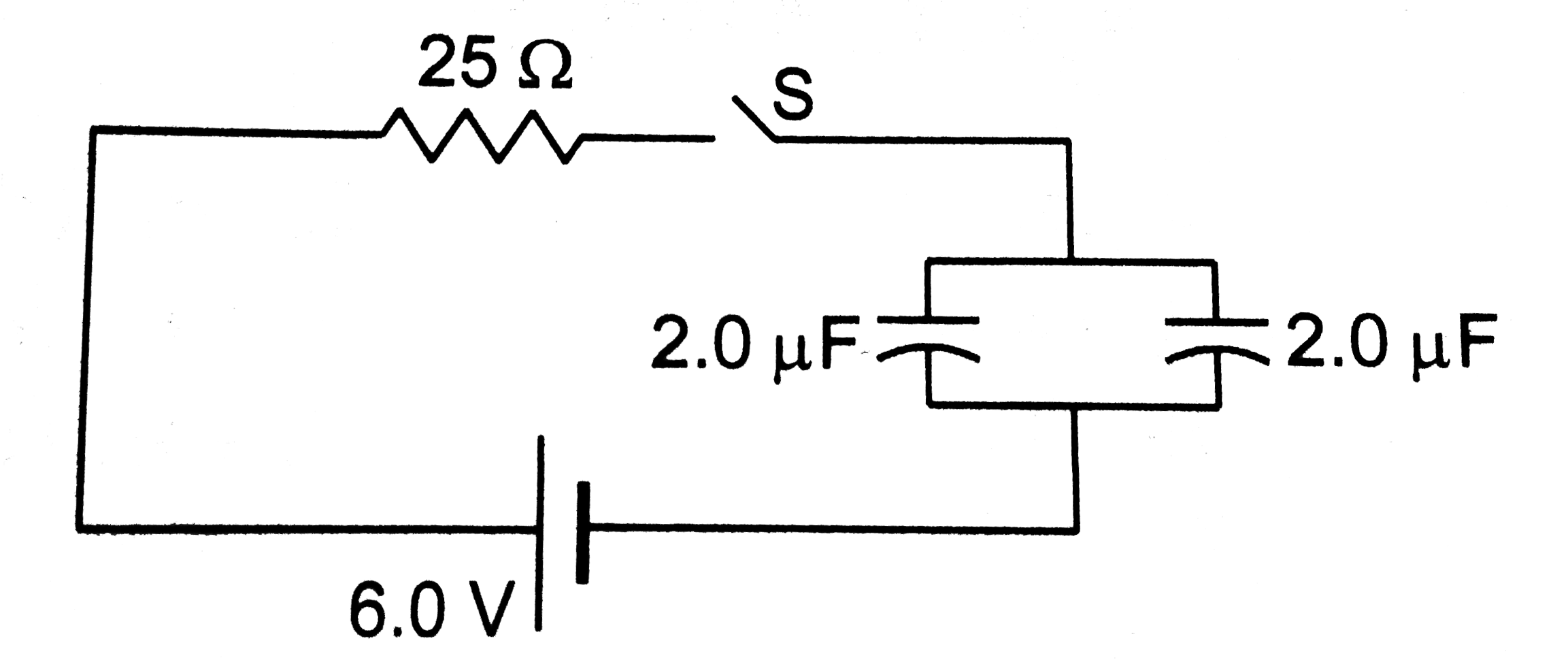
View SolutionThe switch S shown in figure is kept closed for a long time and is then opened at `t=0`.Find the current in the middle `10(Omega)`resistor at `t=1.0ms`.
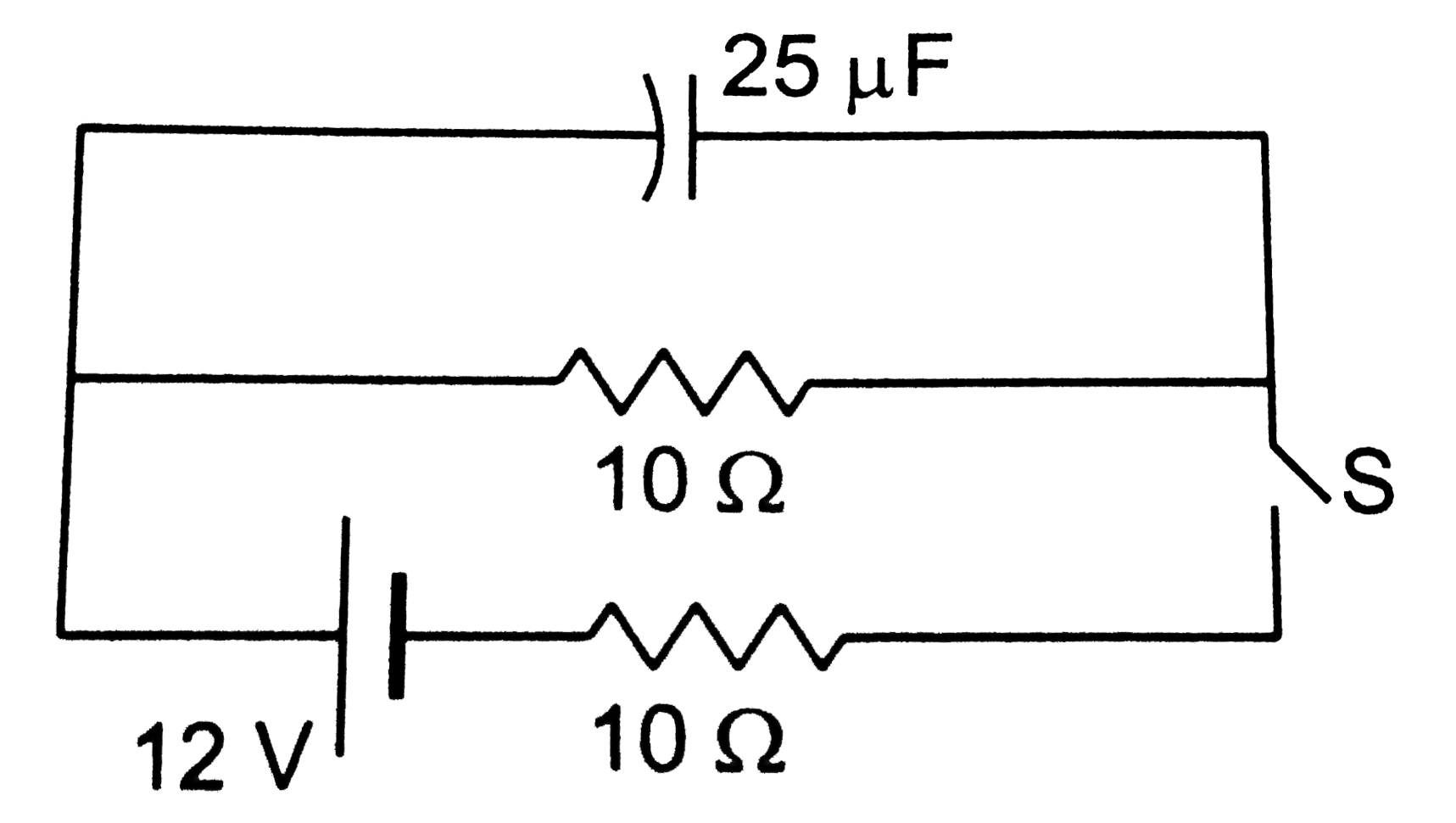
View SolutionAn uncharged capacitor of capacitance `100 mu F` is connected to a battery of emf 20V at t = 0 through a resistance `10 Omega`, then
(ii) time at which the rate has time miximum value is
View SolutionIn the circuit shown in fig, if the switch S is closed at `t = 0` , the capacitor charges with a time constant
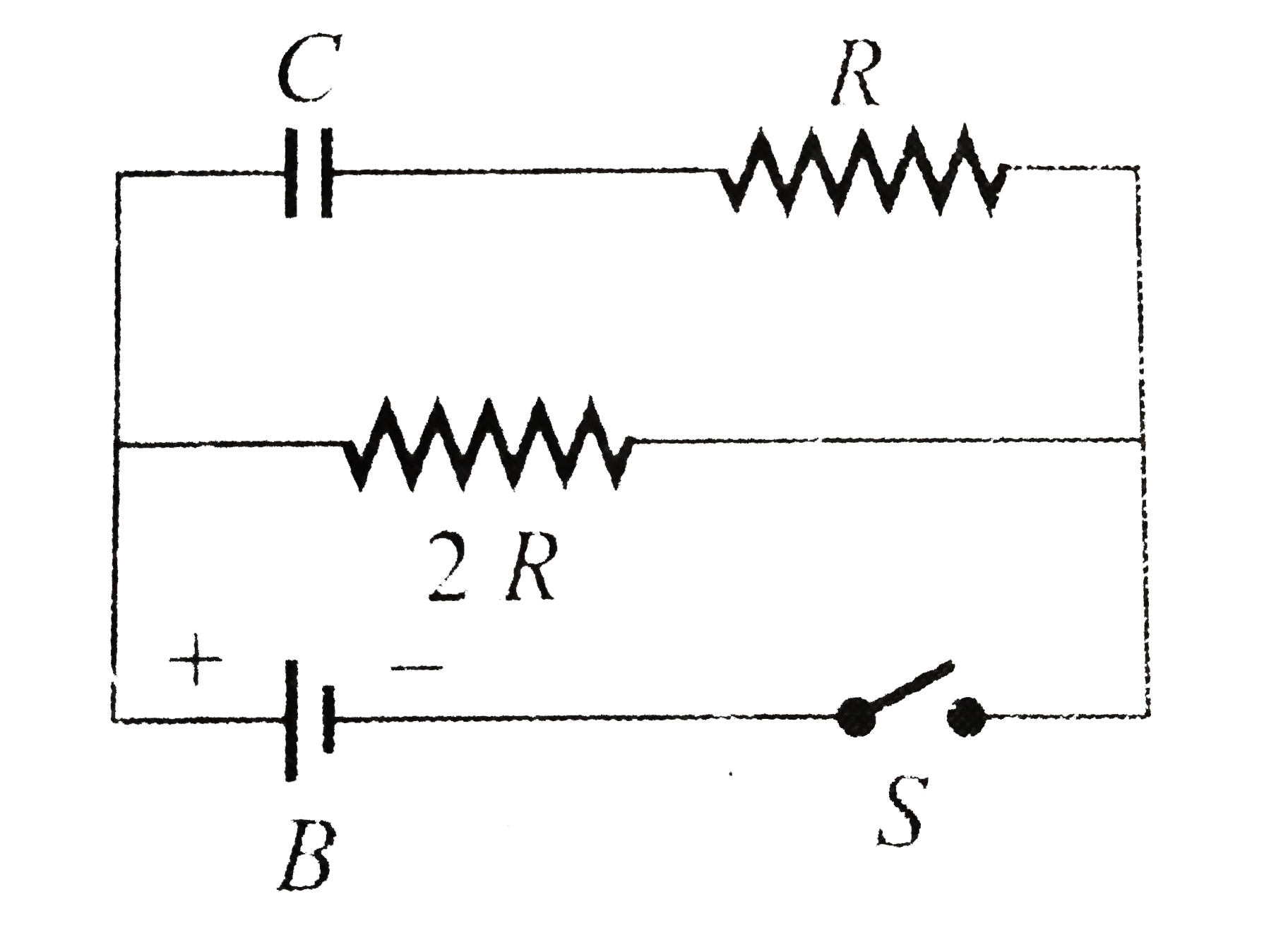
View SolutionA capacitor of capacitance C is given a charge Q. At `t=0`,it is connected to an uncharged of equal capacitance through a resistance R. Find the charge on the second capacitor as a function of time.
View SolutionA capacitor of capacitance as C is given a charge Q. At `t=0`,it is connected to an ideal battery of emf `(epsilon)`through a resistance R. Find the charge on the capacitor at time t.
View Solution
Exercises questions and complete solutions for chapter ELECTRIC CURRENT IN CONDUCTORS of HC VERMA PHYSICS (ENGLISH) of Class 12